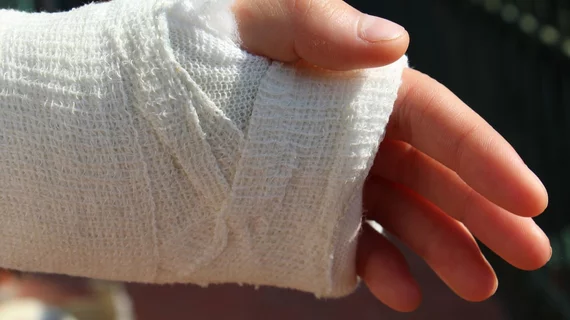Techniques for photon-counting CTs that could improve orthopedic imaging
In a recent assessment shared in the European Journal of Radiology, photon-counting CT scanners garnered a stamp of approval from radiologists for image quality, especially when newly tested reconstruction techniques were applied.
In particular, radiologists were impressed with the technology’s spatial resolution and suitability for imaging bone structures. Compared to energy-integrating detectors (EID), photon-counting detectors (PCD) offered improved image sharpness and visibility of various anatomy in the wrist, including the cortical bone, trabeculae and nutritive canals.
This was concluded by six radiologists who analyzed imaging of twelve cadaveric wrist specimens completed using both EID-CT and PCD-CT. The images were graded based on image noise, contrast-to-noise ratio (CNR) and image sharpness in trabecular structures.
“We specifically investigated the effect of the reconstruction kernel, matrix size and slice thickness on the visualization of trabecular and cortical bone structures in cadaveric wrist specimens,” corresponding author Nina Kämmerling, from the Department of Radiology and Department of Health, Medicine and Caring Sciences at Linköping University in Sweden, and colleagues shared.
Images obtained using PCD-CT produced lower noise, but higher CNR. Compared to EID-CT, the images produced with the photon-counting detector also yielded higher trabecular sharpness using similar scan and reconstruction parameters. This was further improved when sharper reconstruction kernels were used, despite having higher noise levels.
“While reducing detector element size and slice thickness results in an improved spatial resolution, this typically comes at the cost of higher noise and therefore, lower CNR,” the experts explained. “However, because of the direct conversion of x-ray photons to electrical signals, the count weighting of photons and the absence of septa between detector elements, detector efficiency is substantially improved in PCD-CT at comparable reconstruction kernels.”
The authors eluded that this finding is a first in the study of PCD-CT and that it could lead to more precise diagnosis of bony pathologies in the future once validated on patients.
View the full study here.
Related to photon-counting detectors:
VIDEO: Example of photo-counting cardiac CT with calcified coronaries
Photon-counting CT boosts image quality and reader confidence in identifying coronary artery disease
Researchers unveil first three-photon PET scanner with big implications for cancer care
First clinical photon-counting CT tops past 50 years of technology, with ‘striking’ improvements
Reference:
Nina Kämmerling, Mårten Sandstedt, Simon Farnebo, Anders Persson, Erik Tesselaar. Assessment of image quality in photon-counting detector computed tomography of the wrist – an ex vivo study. European Journal of Radiology, 2022.

